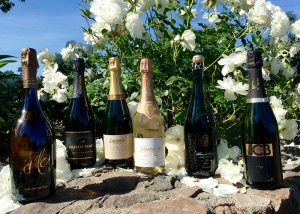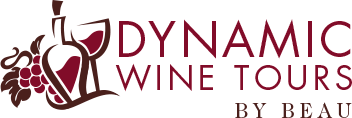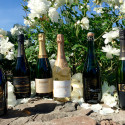Ever ask who wants bubbles? If you get the answer “not me”, you probably think to yourself that’s odd, that person must not like puppies either. So let’s skip over that anomaly and get right to the heart of bubbles, taking it to all those folks whom give the uproariously and enthusiastic answer of “yes, anytime, any place”. You know who you are!
Bubbles aka sparkling wine aka champagne will be words used in exchangeable through this story. One thing for certain, the common premise is that the process of making the bubbles talked about is the “Methode Traditionelle” aka “Methode Champenoise”. The terms Champenoise or labeling Champagne can only be used if produced or originated in the Champagne region of France. Simply put, the “MT” process, still wine which starts in the bottle stays in that same bottle through every single process until you open it at your pleasure as the bubbles and sparkling wine consumer.
 Bubbles really did result from the old saying, when life gives you lemons, make lemonade. In other words, when the wine region you are in gives a cold winter like that of Champagne, the wine has a tendency to stop fermenting in cold winter and restarts fermenting in spring. This restart second fermentation was considered a nuisance because it would break the very flimsy bottles upon the release of carbon dioxide. Bam, broken bottles and lost wine. Never good as “your ship comes in” to the English Harbor back in the 17th Century from France.
Bubbles really did result from the old saying, when life gives you lemons, make lemonade. In other words, when the wine region you are in gives a cold winter like that of Champagne, the wine has a tendency to stop fermenting in cold winter and restarts fermenting in spring. This restart second fermentation was considered a nuisance because it would break the very flimsy bottles upon the release of carbon dioxide. Bam, broken bottles and lost wine. Never good as “your ship comes in” to the English Harbor back in the 17th Century from France.
British society had fallen in love with the wine and especially the Champagne, by accidental creation, being shipped from the Champagne Region of France. The British decided it was time to make a stronger bottle and keep the bubbles flowing.
Benedictine monk Dom Perignon, embraced the stronger bottle much too his credit as well as the blending of wines from different grape types and different vineyards. He also introduced the cork for a secure closure instead of the unreliable hemp and oil stopper of the time.
One myth, Dom Perignon is sometimes accredited for sparkling wine(the French loved still white and the English white with bubbles aka sparkling wine). In actuality, Dom, was trying hard to eliminate the bubbles! out of what was called at the time, the Devils Wine. The Devils Wine nickname because of the explosion in the wine cellars enough so that the workers wore iron hats.
Another myth, the Champagne glass with its saucer shape was modeled after Marie Antionette’s breasts. Her breasts had not been invented yet as she had not been born.
Some bubbly facts:
1. Marilyn Monroe took a bath in champagne, all 350 bottles it took to fill the tub.
2. James Bond drank champagne in 35 of the famous long and still running James Bond films.
3. The French sell well over 300 million bottles of champagne a year. The United Kingdom still loves their bubbles and is France’s largest export market.
4. There is 90 pounds of pressure per square inch in a champagne bottle(that is 3 times the pressure in the tires of a car)
5. “Sabrage” is the actual action of opening a bottle of champagne with a sword. Sabrage was made famous by Napoleon upon his celebrated battle victories.
6. Bubbly by country include Italy with Prosecco, Cava from Spain, and Sekt from Germany.
7. The 3 grapes of champagne aka sparkling wine aka bubbles are Pinot Noir, Chardonnay, and Meunier.
8. In a 3.4 ounce pour of champagne there are 100 million bubbles before going flat in 4 hours.
9. If you are really into bubbles buy a Melchizedek-it is 40 times the size of a normal bottle.
10. Store your champagne on its side, rotating the bottle on a regular basis to keep the cork damp. Light starts to degrade champagne immediately so keep your bottles in a dark place. Cellars of clay work the best, but most of us don’t have one of those.
11. The smaller the bubbles in your glass the better the quality.
12. You are more likely to be killed by a flying cork than a poisonous spider.
13. The metal enclosure over the cork is called a cage.
14. The foil over the cage and cork has a zipper to pull hence the ability to take the foil off with grace.
15. When opening your bubbles, hold the cork and turn the bottle from the bottom toward you and cork away from anyone else.
16. Never pour bubbles into non chilled orange juice for mimosas unless you like cleaning up a mess. Bubblious becomes bubble over!
17. A producer of sparkling wine made in the “Methode Traditionelle” in California prior to 2006 can label their bubbles California Champagne.
Now that you are bubbling over with knowledge and ready to pop the cork, here are some of the finest producers of sparkling wine and “bubbles houses and lounges” in the Napa Valley.
- Artesa Vineyards & Winery
- Domaine Chandon
- Domaine Carneros
- Mumm Napa
- Schramsberg Vineyards
- Frank Family Vineyards
- JCB Tasting Salon & Atelier by JCB
All for now…time to get my bubbly on…it is a day that ends in Y. And Y not? I love puppies too!




Sorry, comments are closed for this post.